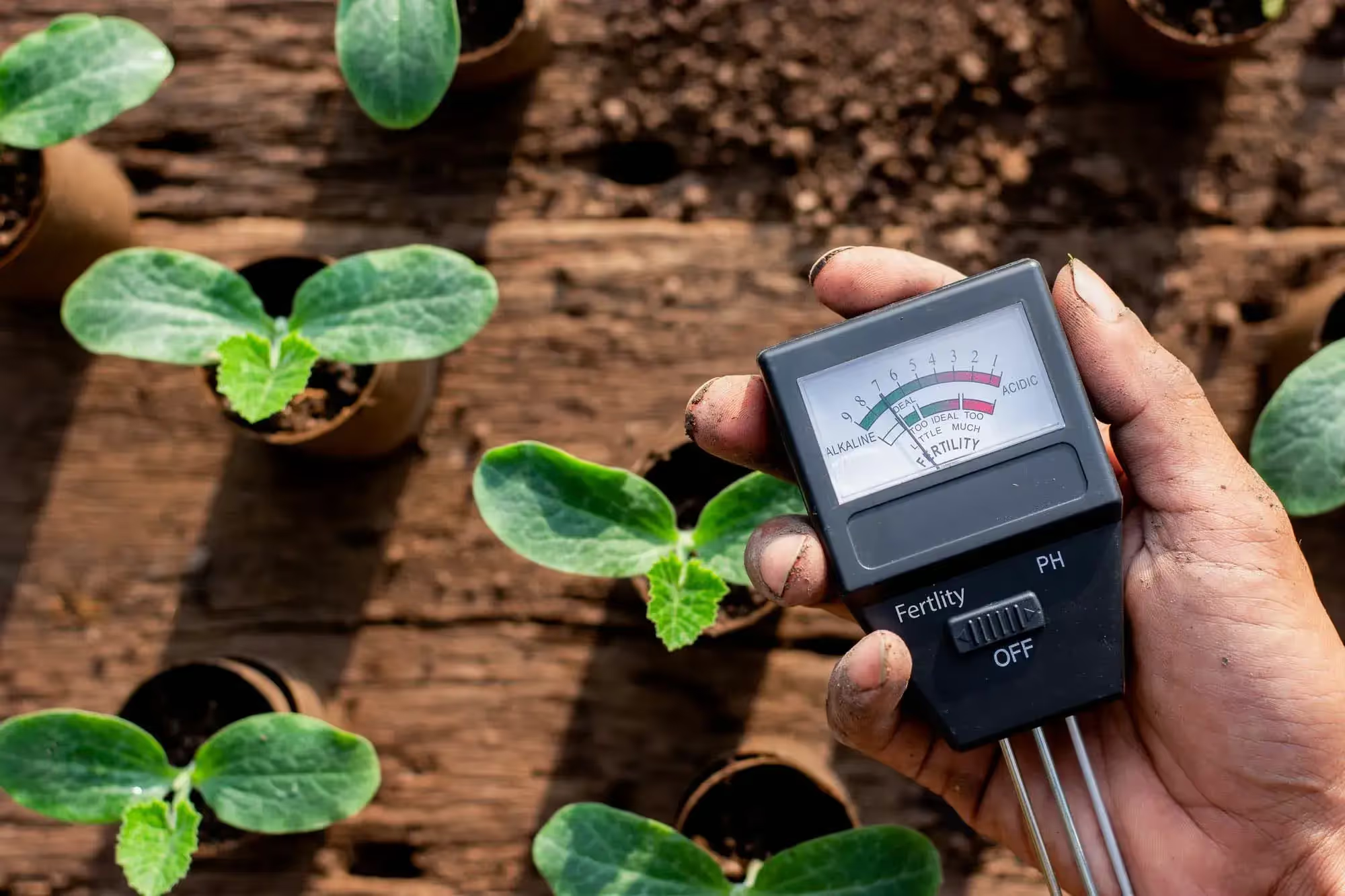
One of the most significant technological advances in agriculture is the Internet of Things (IoT), which allows for automation and precise management of plant growth conditions. IoT sensors, placed in the soil or surrounding the plants, collect essential data necessary for the optimal growth and development of plants. Parameters such as moisture, pH, and temperature can be monitored in real-time, and based on this data, users can receive accurate feedback through applications, allowing for precise and efficient management of plant growth conditions.
IoT (Internet of Things) sensors are devices that collect data on physical and chemical parameters from the environment in which they are placed. In agriculture and plant cultivation, IoT sensors enable the collection of data that is vital for monitoring plant health and managing growth conditions efficiently. Sensors can be installed in the soil, on the plant, or in the surrounding environment.
Soil Moisture Sensors: Measuring soil moisture is critical for assessing the water needs of plants. Excessively high or low moisture levels can negatively affect plant health. IoT soil moisture sensors enable precise monitoring and automatic irrigation based on the plant's needs.
Soil pH Sensors: Soil pH is a key factor influencing the availability of nutrients to plants. Too acidic or too alkaline soil can limit plant growth. pH sensors allow users to maintain the optimal pH level for specific plant species.
Temperature Sensors: Temperature is another critical factor affecting plant growth. Excessive or insufficient temperatures can stress plants and slow their development. Temperature sensors enable real-time monitoring of temperature to ensure ideal growing conditions.
Light Sensors: Plants rely on light for photosynthesis, so monitoring light levels is crucial. IoT light sensors can help optimize lighting schedules or other controlled conditions.
Precise Resource Management: IoT sensors allow precise measurement and tracking of key factors like moisture, temperature, and pH, facilitating better resource planning. For instance, soil moisture sensors can automatically trigger irrigation systems when moisture falls below a certain threshold, reducing water consumption.
Early Detection of Problems: Real-time monitoring enables the quick identification of problems, such as unsuitable growing conditions, excessive temperature stress, or pH imbalances. This allows users to address issues promptly, ensuring plant health.
Optimization of Growth Conditions: By using IoT sensors, users can automatically adjust conditions such as temperature, humidity, and light to maintain optimal growing conditions at all times. This is particularly beneficial in controlled environments such as greenhouses and hydroponic systems.
Increased Yields: Monitoring and optimizing growth conditions lead to higher yields and better-quality plants. Plants that grow in optimal conditions develop faster, healthier, and produce larger and better-quality fruits, vegetables and herbs.
Financial and Time Savings: Automated IoT systems save time that would otherwise be spent manually monitoring and adjusting conditions. Additionally, smart resource management can result in significant cost savings.
IoT sensors connect to a central system via Wi-Fi or mobile networks. The data collected by the sensors is sent to the cloud or a local server, where it is analyzed and processed. This data is then made available to users through apps or web platforms. Apps allow users to view current conditions and receive optimization suggestions, such as advice on irrigation, adjusting temperature, or modifying pH levels. For example, if a soil moisture sensor detects that the soil is too dry, the system can automatically activate the irrigation system. Additionally, if the soil pH value falls below the recommended range, the user can receive a notification to take appropriate action, such as adding calcium or other substances to regulate the pH.
Some apps also offer predictive analytics, which, based on historical data on plant growth, can predict the best times for planting, harvesting, and applying various treatments, leading to even greater efficiency.
IoT sensors provide significant ecological advantages in agriculture, particularly in terms of reducing water, energy, and resource consumption. By using soil moisture sensors, soil moisture levels can be precisely monitored, and irrigation systems can be activated only when needed, greatly reducing water wastage. This is particularly useful in drought-prone areas or for ecological farming practices. Moreover, temperature and light sensors enable efficient regulation of conditions in greenhouses and other controlled environments, optimizing energy consumption. This reduces the environmental impact while protecting natural resources and ecosystems, contributing to the long-term sustainability of agricultural practices.
IoT sensors significantly contribute to ecological sustainability in agriculture, especially through efficient resource management. Monitoring key parameters such as moisture, temperature, and pH levels in real-time allows users to identify optimal growth conditions and quickly resolve issues, leading to increased yields and better-quality plants. This approach not only optimizes water and energy usage but also reduces the need for excessive pesticide and fertilizer use, protecting natural resources and minimizing environmental impact. Sensors enable timely interventions, reducing resource loss and enhancing production efficiency.